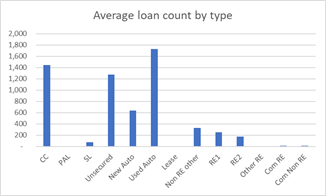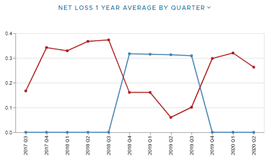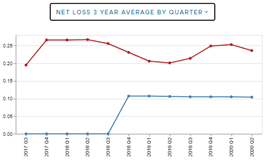One important but often overlooked aspect of an ALLL calculation is what loans should be grouped together to determine your loan loss calculation. This is called “pool determination.”
The WARM method for CECL calculation is built on the assumption that average historical losses will predict future losses. The use of an average implies a large enough data set that the averages would be meaningful. This is often not the case with smaller credit unions which are the target audience for the WARM method. For credit unions under $1B in loans, most loan types have less than 400 loans. This makes the historical loss result volatile and less reliable predictor of future losses.
Average Loan counts by type for CUs under $1B in loans

The charts below reflect a typical credit union. They have approximately $50M in loan balances, $9M of which is comprised of less than 200 RES 1st loans. On the left you can see the rolling 4 quarter average loss for the credit union in blue and the industry average in red. Note how one single charge off at the end of 2018 resulted in a jump from a 0% loss rate to over .3%. On the right you can see the same portfolio over a three year period, still impacted by that single loss. The WARM method will further exaggerate this effect since the loss rate would then be multiplied by the estimated remaining life.


What is an appropriate sample size then?
Number of loans in a pool is not the only factor in determining if a pool is large enough to provide an appropriate sample. In addition to the number of loans, one must consider the loss rate and the volatility of that rate in this pool. These factors in combination determine an appropriately large pool.
In order for the WARM method to be a reasonable predictor of future losses, historical losses must be adjusted for the effects of small sample size. The interactive graphs of our CECL solution (CUClarity) provide easy to read historical performance data of both the industry and your credit union to help identify where pool level adjustments should be considered. Click here to learn more…
By Aaron Rouse